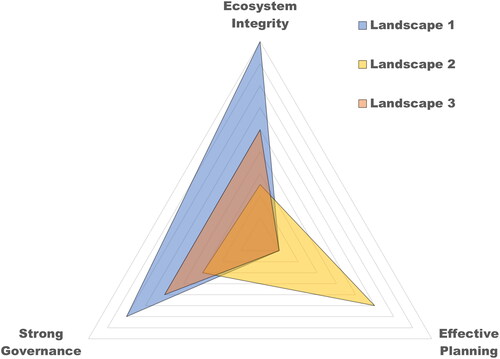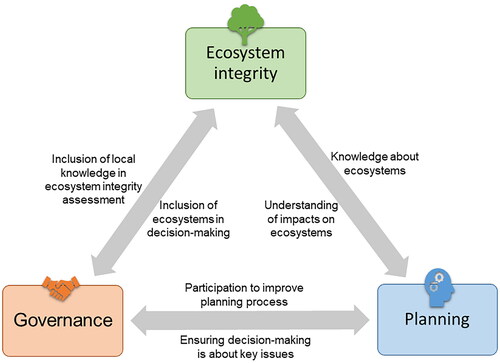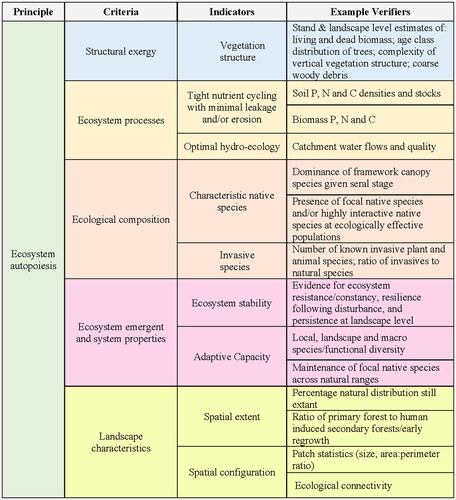Figures & data
Table 1. Examples of proposed indicators of ecosystem integrity.
Figure 2. Hypothetical evaluation of different theoretical landscapes, as described in . Landscape 1 represents an intact forest landscape (i.e. extensive area >50,000 ha of primary forest) set in a developing tropical country where the forest retains a high level of ecosystem integrity and is managed under strong local, participatory governance and planning regimes underpinned by legalised customary land rights. Landscape 2 is set in a temperate forest in a developed country subject to a long history of legal industrial logging, and while this is subject to significant formal planning and governance, these are not participatory and the major stakeholder’s focus is on resource extraction. Landscape 3 represents a developing country with strong customary land rights but weaker centralised governance and more illegal logging.

Table 2. Illustrative assessment of three hypothetical forest landscape contexts using the three pillar framework.
Figure 3. Examples of flows of information between the three pillars can be used to improve forest landscape management.


